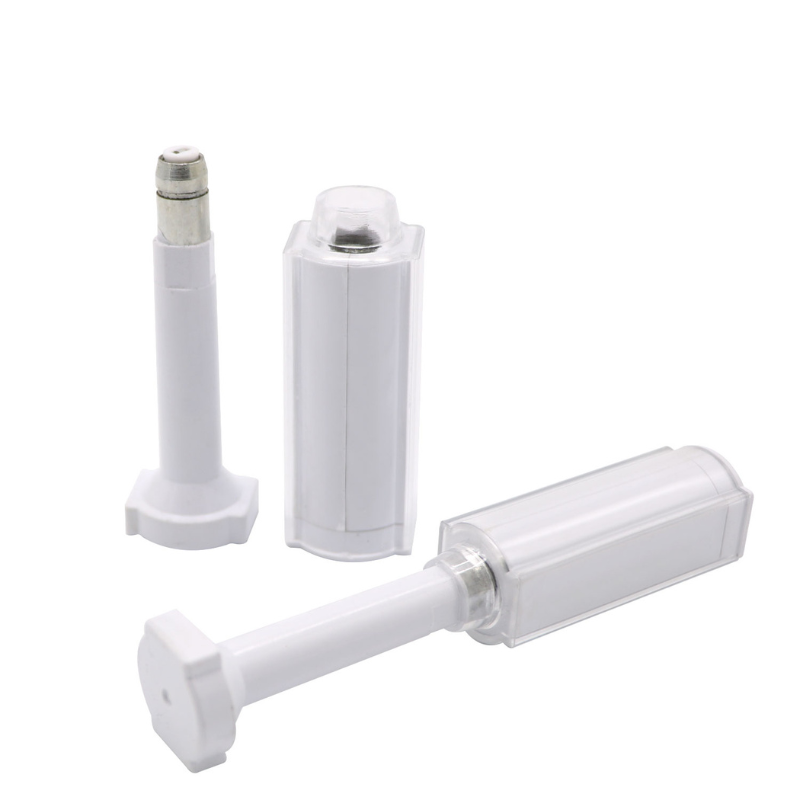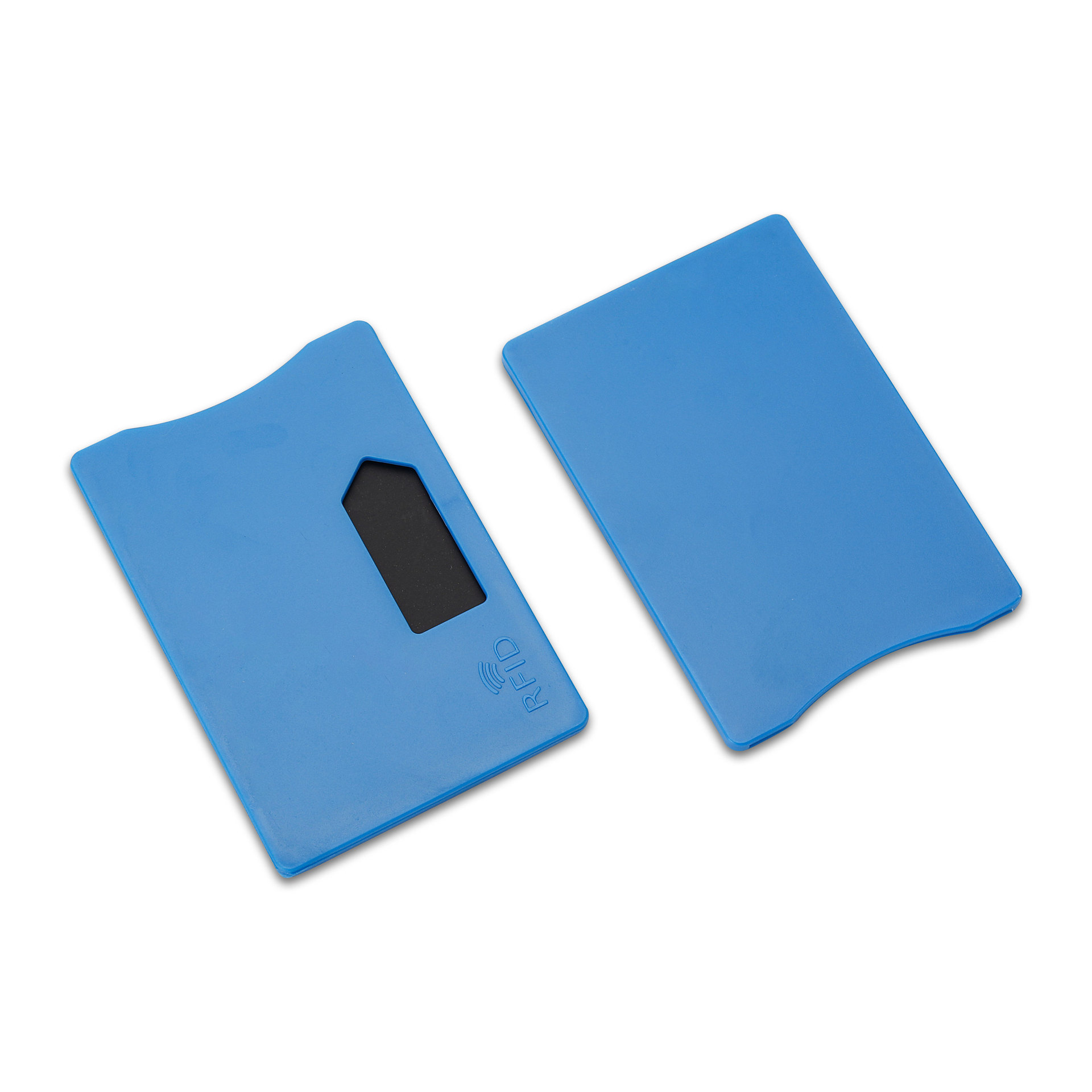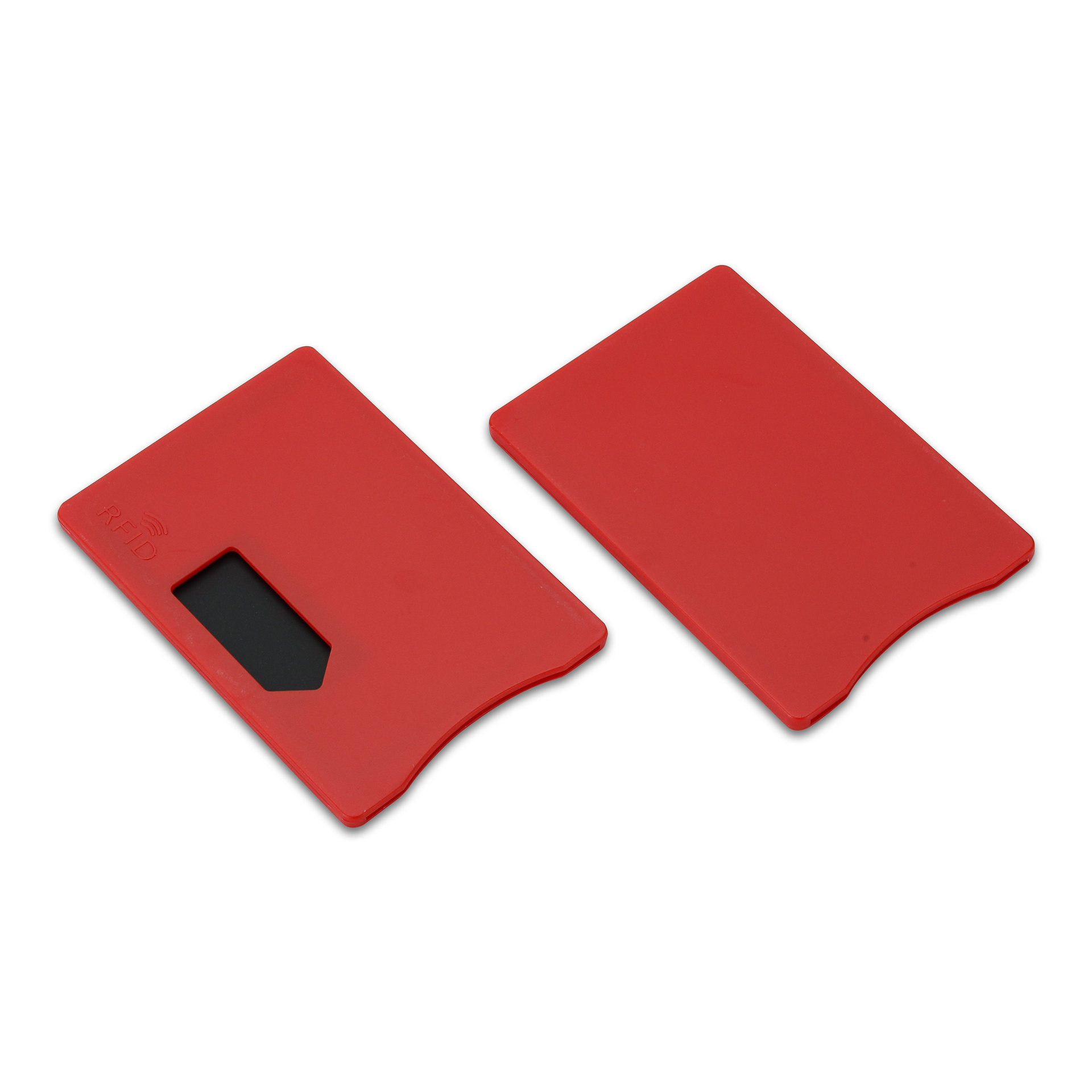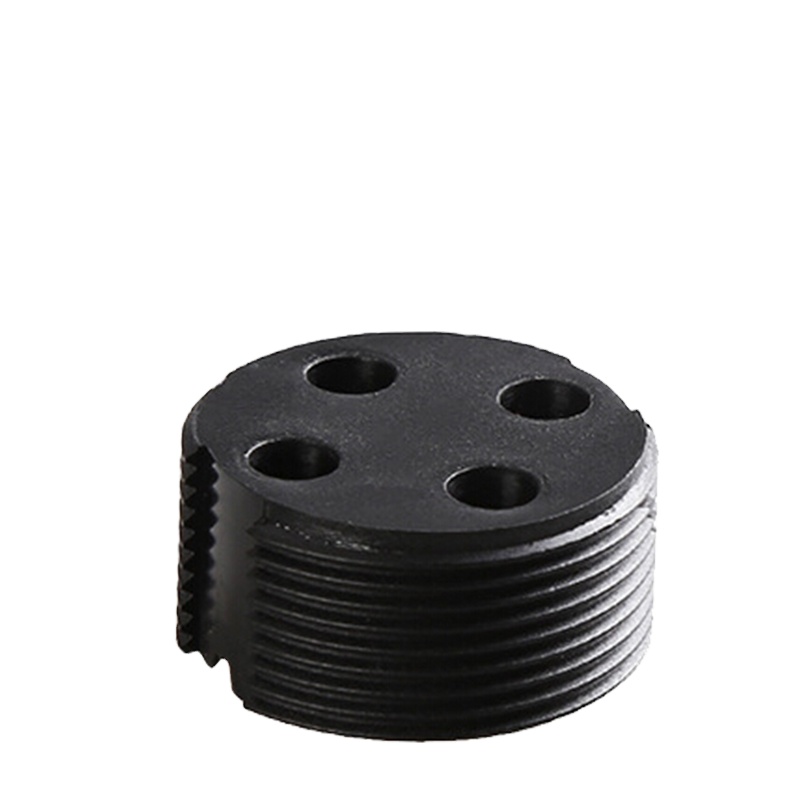
ما هو الفرق بين علامات RF و RFID؟
جدول المحتويات
الفرق بين علامات RF و RFID: التعريفات والتكنولوجيا والتطبيقات في التخزين
ومع ذلك، غالبًا ما يتم استخدام هذين المصطلحين بالتبادل — مما يؤدي إلى إرباك حول معناهما الحقيقي واختلافاتهما. إن فهم الفرق بين RF و RFID يساعد الشركات على تحسين عملياتها، وزيادة كفاءتها، والقيام باستثمارات أكثر ذكاءً في مجال التكنولوجيا.
يشرح هذا الدليل كيفية عمل تقنية الترددات اللاسلكية و علامات RFID العمل، وكيف تختلف، ولماذا تعمل تقنية RFID على تغيير سلاسل التوريد الحديثة.

ما هي تقنية الترددات اللاسلكية وكيف تعمل؟
يشير مصطلح الترددات الراديوية (RF) إلى استخدام موجات الراديو الكهرومغناطيسية لنقل البيانات لاسلكيًا. وهو يشكل الأساس لعدة أنظمة اتصالات لاسلكية، بما في ذلك تقنية RFID وWi‑Fi وBluetooth.
المكونات الرئيسية لتكنولوجيا الترددات اللاسلكية:
- جهاز الإرسال والاستقبال: توليد واستقبال الإشارات اللاسلكية.
- نطاق التردد: يعمل من بضعة كيلوهرتز (kHz) إلى جيجاهيرتز (GHz)، حسب حالة الاستخدام.
- التطبيقات: تستخدم بشكل شائع في أنظمة الاتصالات وأجهزة التحكم عن بعد لأبواب المرآب والميكروفونات اللاسلكية وأنظمة الأمان.
باختصار، توفر تقنية الترددات اللاسلكية (RF) البنية التحتية اللاسلكية التي تتيح التعرف والاتصال وتبادل البيانات — وتعد تقنية RFID واحدة من أكثر تطبيقاتها تخصصًا.
ما هو RFID وكيف يعمل؟
تعتمد تقنية RFID (تحديد الهوية بواسطة الترددات الراديوية) على تقنية الترددات الراديوية لتمكين تحديد الهوية اللاسلكية وتتبع الأجسام الموسومة.
يتكون نظام RFID من:
- علامات RFID
- قارئ RFID
- نظام الهوائي والبرمجيات
كيف تعمل تقنية RFID:
- تنشيط القارئ: قارئ RFID يرسل إشارة لاسلكية عبر هوائي.
- استجابة العلامة: تلتقط علامة RFID الطاقة من تلك الإشارة وترسل البيانات المخزنة.
- التقاط البيانات: يتلقى القارئ استجابة العلامة وينقل البيانات إلى قاعدة بيانات مركزية أو نظام إدارة المستودعات (WMS).
على عكس الباركود، لا تتطلب علامات RFID المسح الضوئي المباشر، مما يسمح بقراءة عدة علامات في وقت واحد ويحسن الكفاءة في البيئات المزدحمة.
الفرق بين RF و RFID
بينما يمثل التردد اللاسلكي (RF) الفئة الأوسع للاتصالات اللاسلكية، فإن تقنية RFID هي تطبيق محدد لتقنية التردد اللاسلكي مصمم لتحديد العناصر وتتبع البيانات.
| ميزة | التردد اللاسلكي | تقنية تحديد الهوية بموجات الراديو |
|---|---|---|
| تعريف | الاستخدام العام للموجات الراديوية لنقل البيانات لاسلكياً | تطبيق الترددات اللاسلكية في تحديد الأجسام وتعقبها |
| المكونات الرئيسية | المرسل والمستقبل | العلامات، والقارئات، والهوائيات، وبرامج الإدارة |
| نوع الاتصال | نقل الإشارة الأساسية | التعريف المتبادل وتبادل البيانات |
| التطبيقات | أجهزة الراديو وأجهزة التحكم عن بعد وشبكات Wi-Fi وأنظمة الأمان | إدارة المستودعات، اللوجستيات، البيع بالتجزئة، التحكم في الوصول |
| وظائف البيانات | نقل بيانات الإشارات الأولية | تحويلات المعلومات الرقمية المخزنة المرتبطة بالأصول المادية |
كيفية عمل بطاقات التعريف بالترددات اللاسلكية
علامات RFID هي أجهزة مصغرة تخزن البيانات وترسلها إلى قارئ RFID. تحتوي كل علامة على:
- الرقاقة الدقيقة (IC): تخزن بيانات التعريف الفريدة.
- الهوائي: يستقبل الطاقة ويرسل الإشارات.
- الركيزة/الطبقة الداخلية: تحمي المكونات الداخلية.
عندما تدخل علامة إلى مجال قارئ RFID، فإنها تنقل بيانات مثل معرف فريد أو رمز منتج — مما يتيح الرؤية في الوقت الفعلي عبر عمليات المستودع أو سلسلة التوريد.
أنواع علامات RFID
1. علامات RFID السلبية
- مصدر الطاقة: لا توجد بطارية داخلية؛ يتم تشغيله بواسطة إشارة القارئ.
- النطاق: من بضعة سنتيمترات إلى عدة أمتار.
- التطبيقات: البيع بالتجزئة وإدارة المخزون ووضع العلامات على مستوى العناصر.
2. علامات RFID النشطة
- مصدر الطاقة: بطارية مدمجة لنقل الإشارات بشكل مستمر.
- المدى: حتى 100 متر أو أكثر.
- التطبيقات: تتبع المركبات، إدارة الأسطول، مراقبة الأصول الكبيرة.
يعتمد الاختيار بين علامات RFID النشطة والسلبية على متطلبات النطاق وعمر العلامة والميزانية.
تطبيقات تقنية RFID في التخزين
تقنية RFID تعمل على تغيير عمليات المستودعات وسلسلة التوريد من خلال توفير الأتمتة والدقة والشفافية.
تطبيقات المستودعات الرئيسية:
- إدارة المخزون: رؤية في الوقت الفعلي لمستويات المخزون ومواقع العناصر.
- إدارة الرصيف: تتبع البضائع أثناء دخولها وخروجها من المنشآت.
- تتبع الأصول: يضمن المساءلة وإمكانية تتبع العناصر عالية القيمة.
- الكفاءة التشغيلية: يقلل من أخطاء المسح اليدوي وتكاليف العمالة.
“يمكن للمستودعات التي تستخدم علامات RFID معالجة ما يصل إلى 20 ضعفًا من حركات المخزون مقارنة بأنظمة الباركود.”
RFID مقابل NFC: متشابهان ولكن مختلفان
كلاهما NFC (الاتصال قريب المدى) وتستخدم RFID تقنية الترددات اللاسلكية، لكنهما تختلفان في النطاق والغرض وقدرة الاتصال.
| ميزة | تقنية تحديد الهوية بموجات الراديو | تقنية الاتصال قريب المدى |
|---|---|---|
| يتراوح | مدى طويل (حتى 100 متر) | مدى قصير (حتى 10 سم) |
| مصدر الطاقة | نشط أو سلبي | سلبي فقط |
| تبادل البيانات | طريقة واحدة | ثنائي الاتجاه (نظير إلى نظير) |
| التطبيقات | إدارة المستودعات، اللوجستيات، تتبع الأصول | المدفوعات عبر الهاتف المحمول، التحقق من الهوية، الوصول الذكي |
يمكن اعتبار NFC بمثابة مجموعة فرعية متخصصة من تقنية RFID، وهي مثالية لتبادل البيانات الآمن على المدى القصير، في حين تهيمن علامات RFID على مجال التتبع الصناعي واللوجستيات.
دور الترددات اللاسلكية في أنظمة الأمان (تكامل EAS)
تستخدم أنظمة المراقبة الإلكترونية للمواد (EAS) عادةً علامات التردد اللاسلكي (RF) لمنع السرقة في بيئات البيع بالتجزئة أو المستودعات.
كيف يعمل نظام أمان بطاقات التردد اللاسلكي:
- وضع العلامة: يتم إرفاق علامة RF بالبضائع.
- الكشف: تقوم بوابات الأمن بمسح العلامات النشطة عند المخارج.
- تنبيه: إذا مرت علامة نشطة، يقوم النظام بتشغيل إنذار.
من خلال دمج تقنية RFID، تحقق أنظمة EAS دقة كشف وأتمتة محسّنة أثناء الدفع أو الشحن.

الأسئلة الشائعة
ما هو الفرق الرئيسي بين RF و RFID؟
يشير RF إلى الاتصالات اللاسلكية العامة التي تستخدم موجات الراديو. RFID هو نوع محدد من تقنية RF يستخدم للتتبع والتعريف من خلال علامات RFID وأجهزة القراءة.
هل يمكن أن تحل تقنية RFID محل الباركود في المستودعات؟
نعم. لا تتطلب علامات RFID خط رؤية مباشر، وتوفر التقاطًا أسرع للبيانات، كما أنها أكثر متانة من الباركود التقليدي.
هل علامات RF وعلامات RFID قابلة للتبادل؟
لا. علامات RF أبسط وتستخدم في الغالب في أنظمة مكافحة السرقة. علامات RFID أكثر تقدمًا وتستخدم للتتبع وتبادل البيانات.
كيف تعمل علامة RFID؟
يرسل قارئ RFID إشارة، وتستجيب العلامة بالبيانات المخزنة، ويقوم النظام بتسجيلها تلقائيًا — وهو أمر مثالي للمخزون في الوقت الفعلي.
خاتمة
تعد تقنية الترددات اللاسلكية (RF) الأساس اللاسلكي للاتصالات الحديثة، بينما تعتمد تقنية RFID عليها لتمكين أنظمة التعرف الذكية والآلية.
- استخدم علامات RFID للتتبع في الوقت الفعلي والأتمتة والدقة في التخزين واللوجستيات.
- استخدام أنظمة التردد اللاسلكي في تطبيقات الاتصالات والاستشعار للأغراض العامة.
من خلال فهم الفرق بين RF و RFID، يمكن للشركات اختيار الأدوات المناسبة لتعزيز الكفاءة وخفض التكاليف وضمان استمرارية عملياتها في المستقبل.

راي تشو
كتب هذا المقال راي تشو، وهو خبير في تكنولوجيا تحديد الهوية بموجات الراديو اللاسلكية يتمتع بخبرة تزيد عن 10 سنوات في هذا المجال.
تعليقات
المنتجات الساخنة
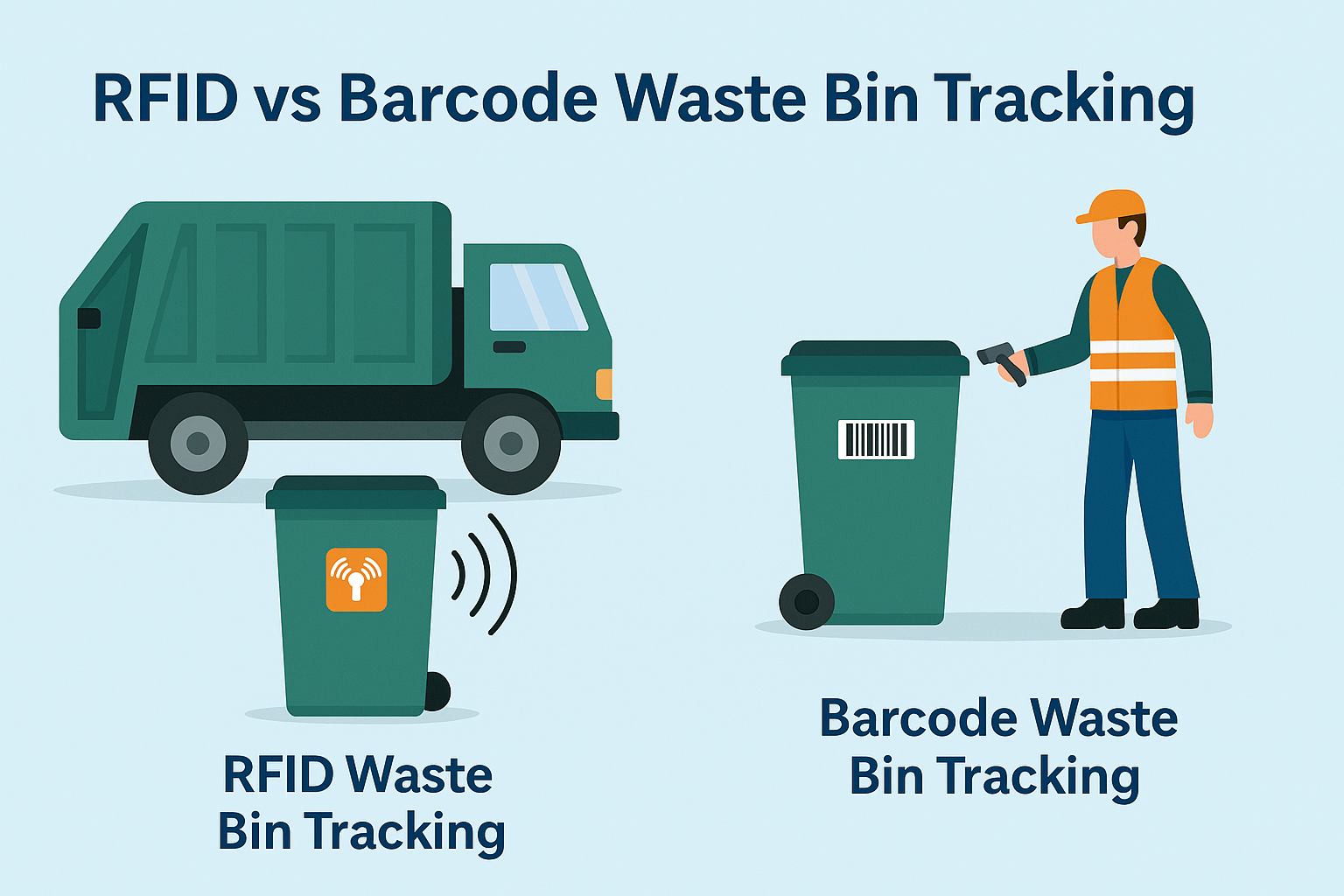
ما هي إدارة النفايات باستخدام تقنية RFID؟
تخيل مدينة حيث كل سلة مهملات تتحدث — ليس حرفياً — ولكن من خلال شريحة صغيرة تخبر النظام عندما تمتلئ، وعندما يتم إفراغها، وأين ذهبت. هذا ما تفعله إدارة النفايات باستخدام تقنية RFID اليوم.
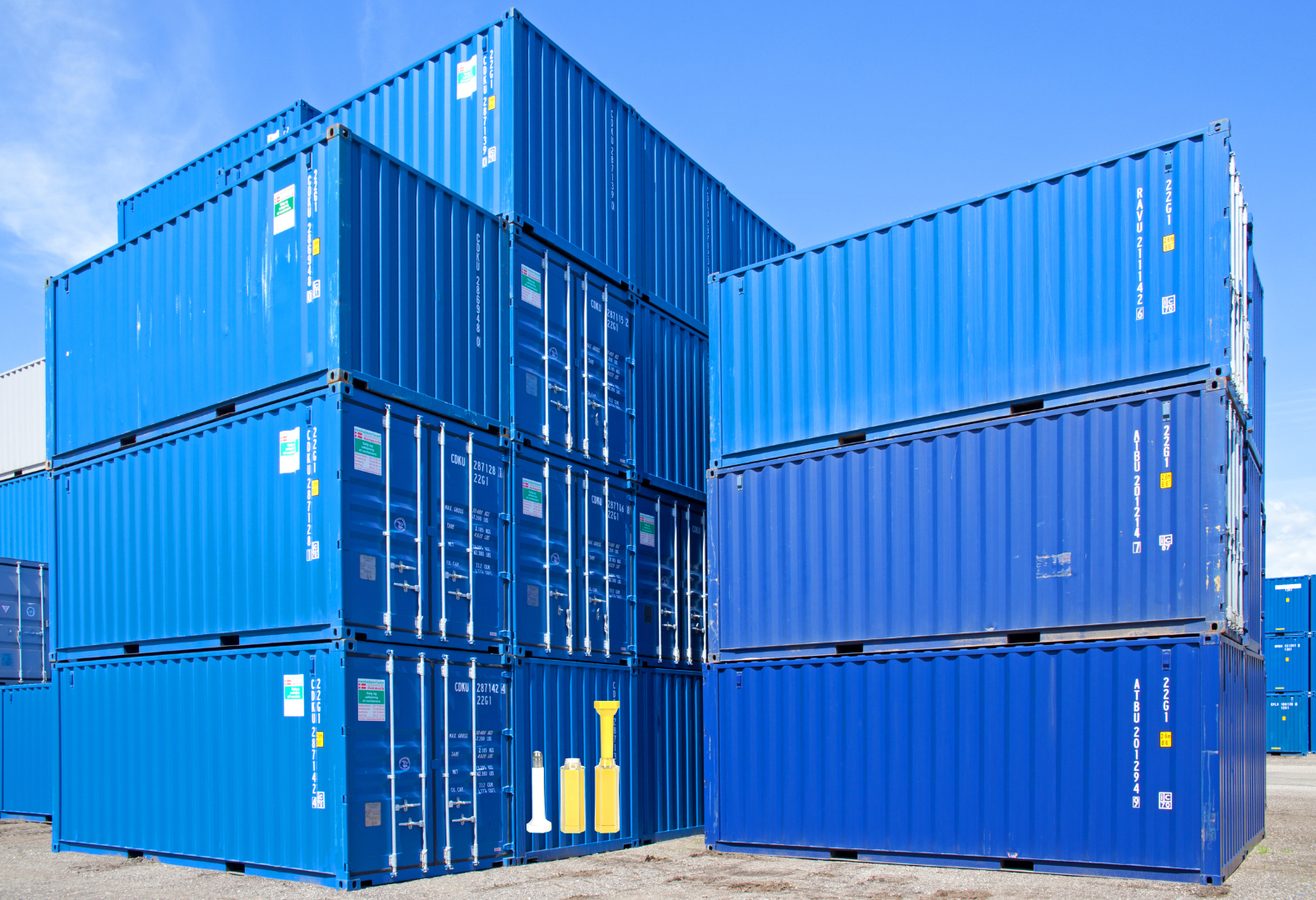
ما هي أختام البراغي وتطبيقاتها؟ | الدليل الكامل
في مجال التجارة العالمية والخدمات اللوجستية العالمية، تلعب الأختام المزودة بمسامير دورًا حاسمًا في ضمان أمن البضائع والامتثال. صُممت هذه الأجهزة الصغيرة والقوية في نفس الوقت لقفل حاويات الشحن والمقطورات وأبواب الشحن بآلية واضحة للتلاعب.
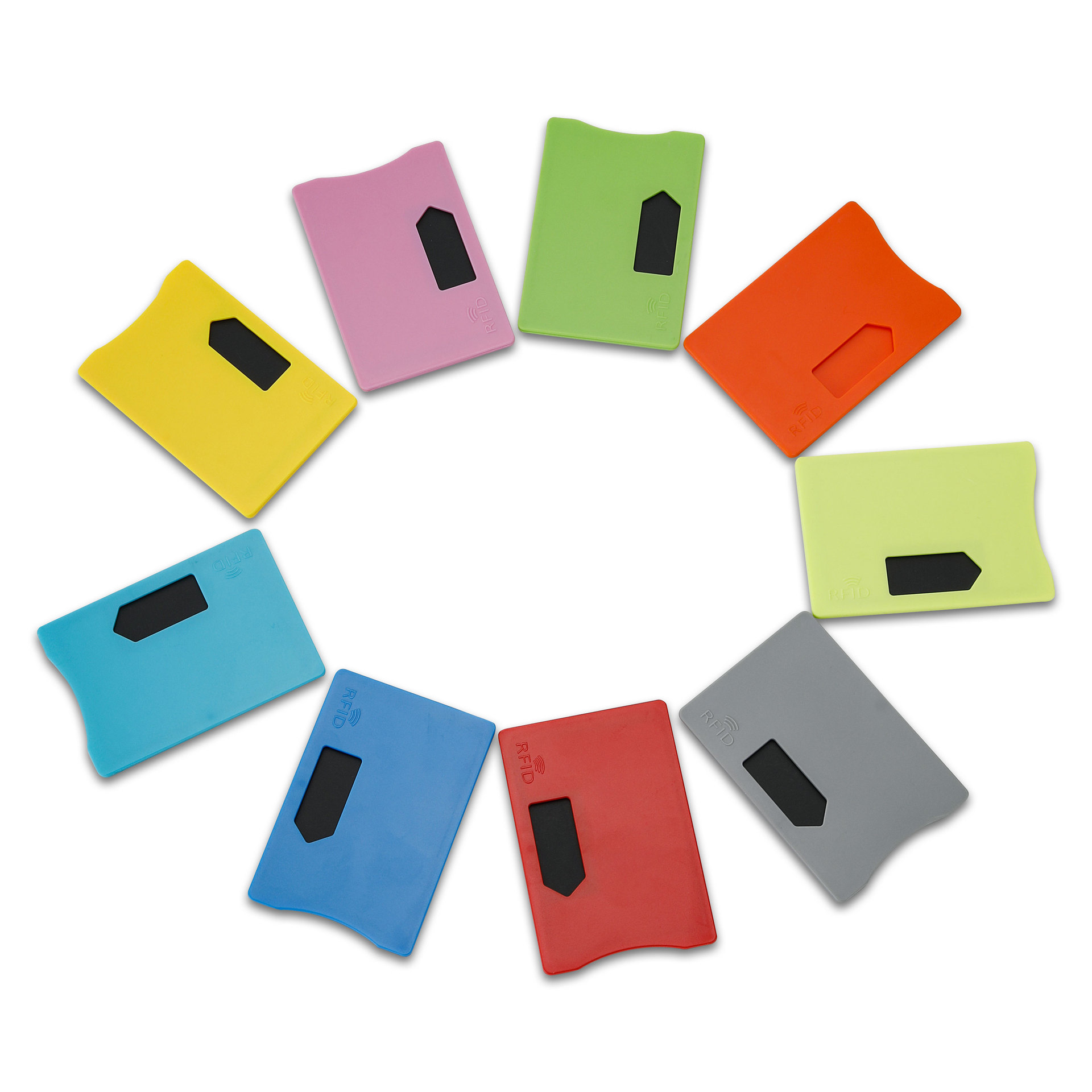
ما هو واقي بطاقة RFID؟ الفوائد وحالات الاستخدام ودليل الشراء
إن تقنية RFID (تحديد الهوية بالترددات الراديوية) موجودة في كل مكان: في بطاقات الائتمان الخاصة بك، وشارات الهوية، وتصاريح العبور، ومفاتيح غرف الفنادق، وغيرها. إنها توفر السرعة والراحة، ولكنها أيضاً تفتح الباب أمام نوع جديد من السرقة الرقمية يسمى "القشط". وهنا يأتي دور واقي البطاقة بتقنية RFID.

أساور المعصم RFID للفعاليات: دليل الشراء بالجملة للمنظمين
أصبحت أساور المعصم التي تعمل بتقنية RFID للأحداث هي الحل المفضل للمنظمين الذين يحتاجون إلى دخول أسرع ومنع الاحتيال والمدفوعات غير النقدية في الحفلات الموسيقية والمهرجانات والأماكن الرياضية. على عكس التذاكر الورقية أو رموز الاستجابة السريعة، تستخدم هذه الأساور الذكية رقائق مدمجة لتبسيط الدخول وتأمين المعاملات وتحسين تجربة الضيوف.
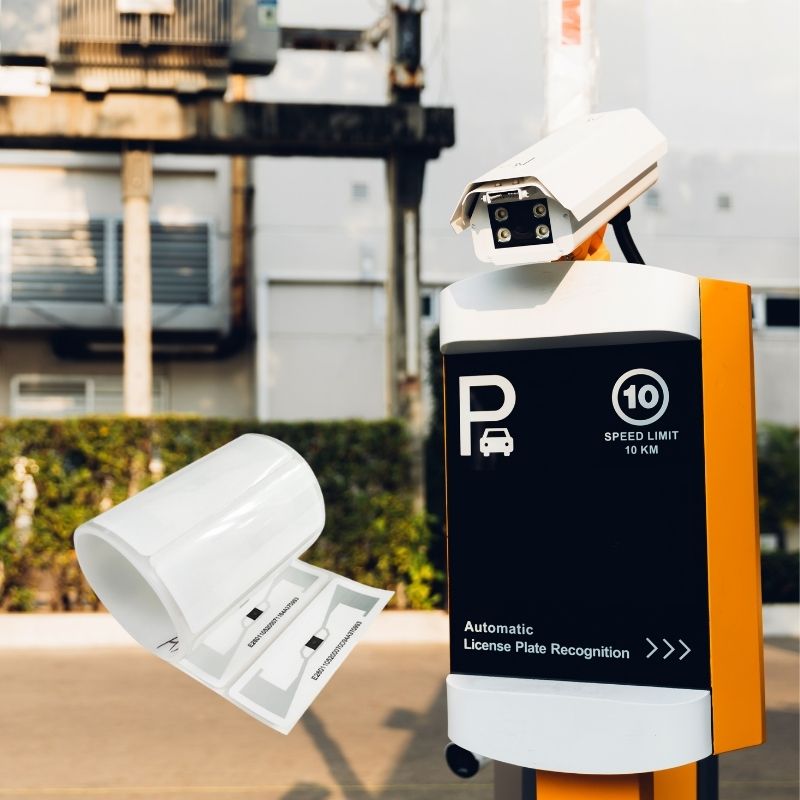
كيف تعمل بطاقة RFID على الزجاج الأمامي على تحسين أنظمة التحكم في دخول المركبات ورسوم المرور
في عالم اليوم سريع الإيقاع، يجب أن يكون التعرف على المركبات سريعاً وآمناً وبدون تلامس. توفر بطاقة RFID على الزجاج الأمامي ذلك بالضبط - طريقة موثوقة لإدارة تحصيل رسوم المرور ومواقف السيارات والدخول من البوابات دون إيقاف المركبات.
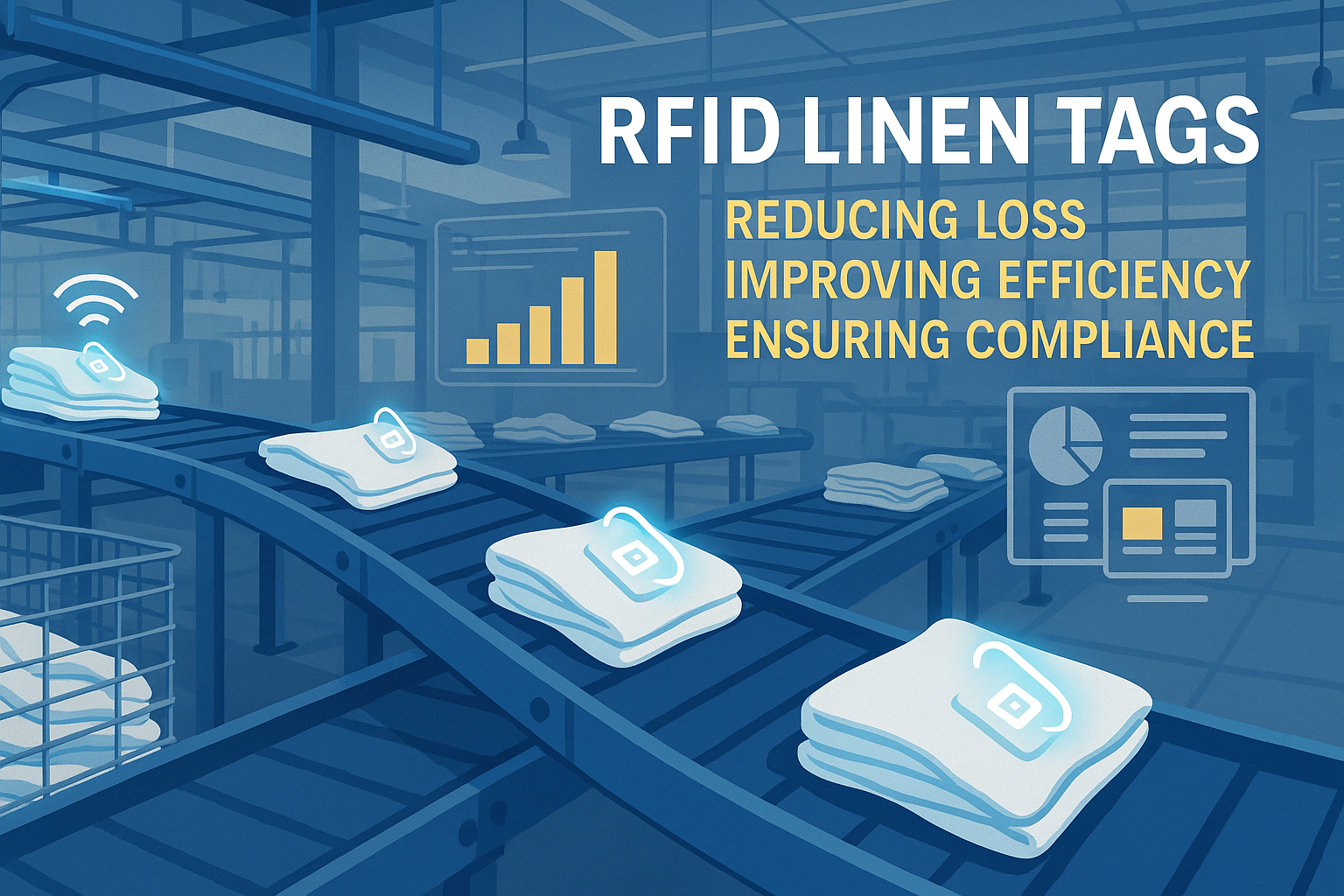
فوائد بطاقات تعريف الترددات اللاسلكية للكتان في المغاسل التجارية
إن إدارة غسيل الملابس في المستشفيات أو الفنادق أو خدمات غسيل الملابس الكبيرة مهمة كبيرة. ففي كل يوم، يتم غسل آلاف الملاءات والمناشف والأزياء الرسمية وفرزها وإرسالها إلى الخارج. ولكن مشاكل مثل البياضات المفقودة وأخطاء الفرز والعد اليدوي يمكن أن تكلف الشركات الكثير من المال. على سبيل المثال، يمكن للفنادق متوسطة الحجم أن تخسر أكثر من $200,000 كل عام بسبب البياضات المفقودة.
وهنا يأتي دور بطاقات الكتان RFID.
العلامات
المدونات ذات الصلة

ما هي إدارة النفايات باستخدام تقنية RFID؟
تخيل مدينة حيث كل سلة مهملات تتحدث — ليس حرفياً — ولكن من خلال شريحة صغيرة تخبر النظام عندما تمتلئ، وعندما يتم إفراغها، وأين ذهبت. هذا ما تفعله إدارة النفايات باستخدام تقنية RFID اليوم.

ما هي أختام البراغي وتطبيقاتها؟ | الدليل الكامل
في مجال التجارة العالمية والخدمات اللوجستية العالمية، تلعب الأختام المزودة بمسامير دورًا حاسمًا في ضمان أمن البضائع والامتثال. صُممت هذه الأجهزة الصغيرة والقوية في نفس الوقت لقفل حاويات الشحن والمقطورات وأبواب الشحن بآلية واضحة للتلاعب.

ما هو واقي بطاقة RFID؟ الفوائد وحالات الاستخدام ودليل الشراء
إن تقنية RFID (تحديد الهوية بالترددات الراديوية) موجودة في كل مكان: في بطاقات الائتمان الخاصة بك، وشارات الهوية، وتصاريح العبور، ومفاتيح غرف الفنادق، وغيرها. إنها توفر السرعة والراحة، ولكنها أيضاً تفتح الباب أمام نوع جديد من السرقة الرقمية يسمى "القشط". وهنا يأتي دور واقي البطاقة بتقنية RFID.

